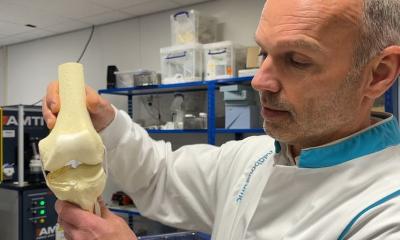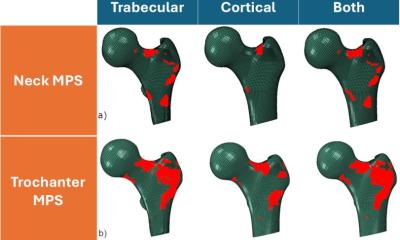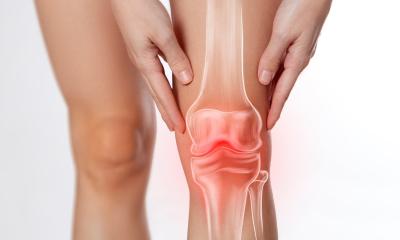Image source: Adobe Stock/ipopba
News • Evaluation of high- and low dose therapy regimens
Knee osteoarthritis: Every bit of exercise helps, but...
Researchers from Karolinska Institutet have compared high dose exercise therapy versus low dose in patients with symptomatic knee osteoarthritis.
The study published in the journal Annals of Internal Medicine shows that both groups had similar results. However, high dose exercise therapy provided superior outcomes related to function in sports and recreation in the short term, with results subsiding after six months.
Osteoarthritis of the knee joint is associated with chronic pain, stiffness, impaired function and reduced quality of life. The preferred treatment is exercise, but there are few studies that have investigated which exercise dose is optimal. The hypothesis of the study was that a high dose is superior to a low dose. The study was designed as a randomized multicenter superiority trial. 189 patients at four different centers, two in Norway and two in Sweden, were included in the study.
Patients randomized to the high dose group performed eleven graded exercises lasting 70 to 90 minutes and patients randomized to the low dose group performed five graded exercises lasting 20 to 30 minutes. All patients had three treatments a week for twelve weeks. Main results were measured using the Knee Injury and Osteoarthritis Outcome Score (KOOS) biweekly for three months and then again at sex and twelve months. At all follow-up periods, KOOS scores improved in both groups, findings that did not support the authors hypothesis. The only differences favoring high-dose exercise were in the domain of knee function during sports and recreation at the end of treatment and six months after the intervention and in the quality-of-life domain at six months.

Image source: Karolinska Institutet; photo: private
The authors note that high-dose treatment could be preferable to low-dose treatment in the long run for people who lead active lives. However, adherence could be an issue, as those in the low-dose group had nearly perfect adherence to the intervention, while the high-dose participants had a higher drop-out rate.
“About half of the participants in both groups improved. Pain, quality of life and knee function improved. Because our study was designed as a superior trial, meaning that even though we failed to show that high-dose treatment is better than low-dose, our results do not imply that a low dose exercise regimen is as beneficial as a high-dose regimen”, says Tom Arild Torstensen, physiotherapist and affiliated researcher at the Department of Neurobiology, Care Sciences and Society at Karolinska Institutet and first author of the study.
The study was funded by the Rheumatism Association and was carried out in collaboration with researchers at the University of Dalarna, Region Dalarna and Norwegian University of Science and Technology.
Source: Karolinska Institutet
25.01.2023











